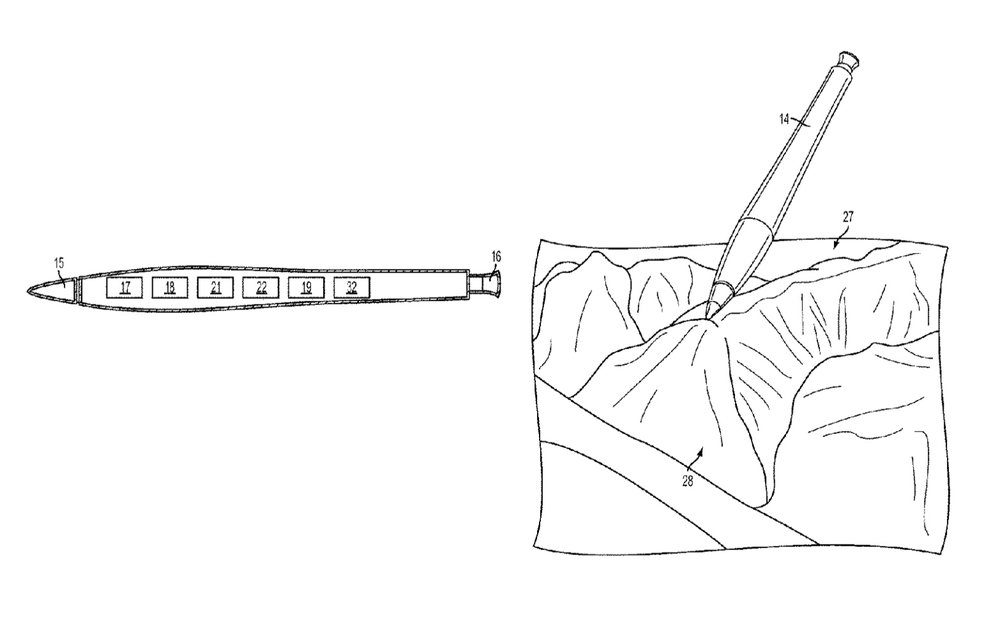Future iterations of the Apple Pencil may be able to capture and represent the texture of a scanned surface, as evidenced by a new Apple patent (number 9,817,489) for a “texture capture stylus and method.” And, yes, I know that Apple says the Pencil isn’t a stylus, but that’s how the tech giant has described it in more than one patent.
According to the patent, the Pencil includes an image sensing and capture device to permit a surface to be scanned using the stylus. An image may be stored and displayed on an electronic device (just the iPad, so far) to represent the texture of the scanned surface.


In the patent filing, Apple notes that texture is an element of two-dimensional and three-dimensional design and is distinguished by its perceived visual and physical properties. Use of texture, along with other elements of design, can convey a variety of messages and emotions.
For example, use of rough surfaces can be visually active, while smooth surfaces can be visually restful. Physical texture, also known as actual texture or tactile texture, are the actual variations upon a surface. Physical texture has a physical quality that is a combination of how the surface looks, and how it feels to the touch. For example, in a painting, physical texture is based on the paint, and its application, or the addition of materials such as ribbon, metal, wood, lace, leather and sand either on the surface of, or mixed with, the paint.
When a user of an electronic device attempts to create an image which includes visual texture, that user may be limited in the type of physical texture he or she can simulate. Apple says that what is needed is an improved device, method and/or system for capturing, storing, and providing visual texturing information from an image of a sensed surface to an electronic device may be useful in permitting the user to create an image which emulates the texture of the surface that was sensed.
Of course, Apple files for — and is granted — lots of patents by the U.S. Patent & Trademark Office. Many are for inventions that never see the light of day. However, you never can tell which ones will materialize in a real product.
